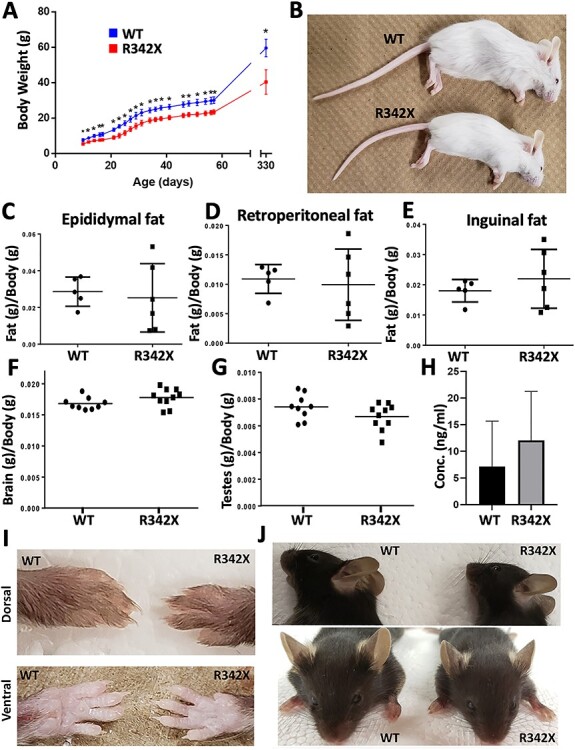Figure 2 .

Analysis of R342X mice for clinical features of BFLS patients. (A) Weight measurements of a cohort of WT (Blue dots; n = 11) and R342X (Red dots; n = 12) mice were plotted beginning at P10 until P330. At all ages the R342X mice had a statistically significant (*, P < 0.05) reduction in body weight. (B) Image of WT and R342X mice (FVB/N) highlighting the difference in size at P25. (C-E) Plotted ratio of fat/body weight for WT and R342X mice from the epididymal (C), retroperitoneal (D) and inguinal (E) fat deposits. (F) Brain weight to body weight ratio, and (G) testes weight to body weight ratio show no difference between WT and R342X littermates. (H) Testosterone plasma concentration levels in WT and R342X mice. Images of forepaw digits (I) and ears (J) were assessed for morphological features of BFLS.
